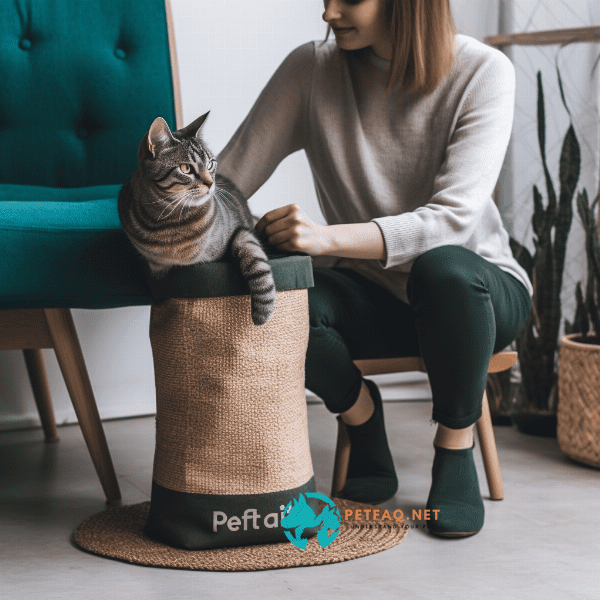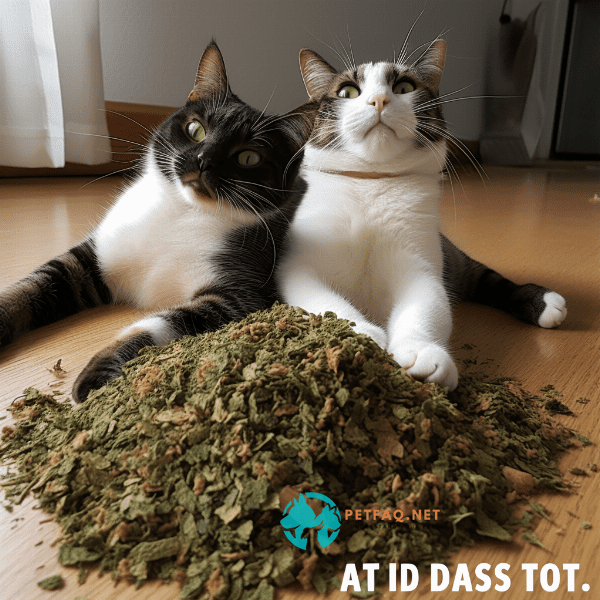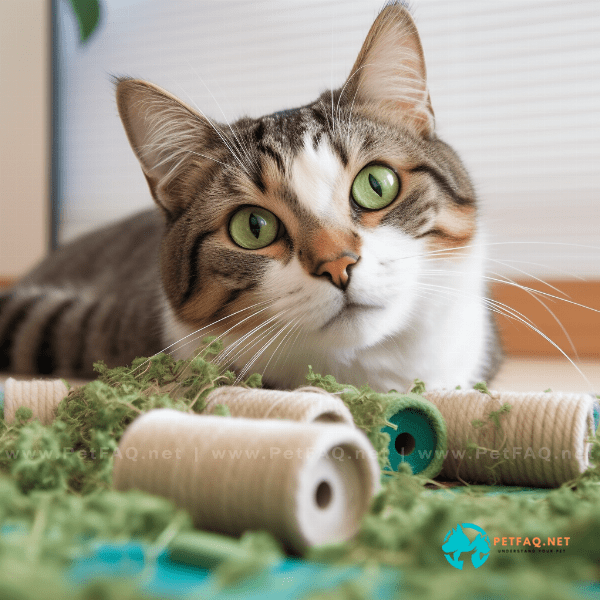Table of Contents
- What is Catnip Plant and How Does it Affect Cats?
- The Benefits of Catnip Plant for Your Cat’s Health and Wellbeing
- How to Grow Catnip Plant in Your Home Garden
- Different Ways to Use Catnip Plant to Entertain Your Cat
- Catnip Plant as a Natural Stress Reliever for Your Cat
- Catnip Plant and its Effect on Your Cat’s Mood
- Catnip Plant and Its Role in Training Your Cat
- Catnip Plant and Its Relationship with Other Feline Behaviors
- Precautions and Safety Measures when Using Catnip Plant for Your Cat
- Conclusion: Incorporating Catnip Plant into Your Cat’s Life
What is Catnip Plant and How Does it Affect Cats?
Catnip plant, also known as Nepeta cataria, is a perennial herb that belongs to the mint family. It is native to Europe and Asia but is now commonly found in North America as well. Catnip plant contains a natural chemical called nepetalactone, which is responsible for its effects on cats.
How Catnip Affects Cats
When a cat sniffs or eats catnip plant, the nepetalactone binds to the olfactory receptors in their nose, which then sends a signal to the brain. This signal triggers a response in the cat’s brain that results in a range of behaviors, including rolling, rubbing, and even vocalizing. The effect of catnip on cats can last from a few minutes up to an hour, after which the cat may become temporarily immune to its effects.
Is Catnip Safe for Cats?
Catnip plant is safe for cats and is not addictive. However, too much catnip can cause an upset stomach or diarrhea in cats, so it’s important to monitor the amount of catnip your cat is consuming. Additionally, if your cat shows signs of aggression or overstimulation when exposed to catnip, it may be best to avoid using it.
In summary, catnip plant is a natural herb that can have a unique and enjoyable effect on cats. Understanding how it affects cats and how to safely use it can provide hours of entertainment and enjoyment for both you and your feline companion.

The Benefits of Catnip Plant for Your Cat’s Health and Wellbeing
Catnip plant not only provides entertainment for cats but can also have various benefits for their health and wellbeing.
Promotes Exercise and Mental Stimulation
Using catnip plant as a tool for playtime can promote exercise and mental stimulation for your cat. The playful behaviors exhibited by cats when exposed to catnip can encourage them to be more active, which can improve their overall physical health.
Relieves Stress and Anxiety
Catnip plant can also be used as a natural stress reliever for cats. The nepetalactone in catnip has a calming effect on cats, which can help alleviate stress and anxiety. This can be especially beneficial for cats who are nervous or anxious in new environments or during events such as vet visits.
Encourages Good Sleep
Exposure to catnip plant can also help your cat relax and sleep better. The calming effects of catnip can help your cat achieve a more restful sleep, which can improve their overall health and wellbeing.
Helps with Digestion
Catnip plant can also have digestive benefits for cats. When consumed, catnip can help stimulate digestion and relieve gastrointestinal discomfort in cats.
In conclusion, catnip plant can have various benefits for your cat’s health and wellbeing. Incorporating it into their playtime routine can promote exercise and mental stimulation, while also providing a natural stress reliever and improving their overall digestion and sleep.
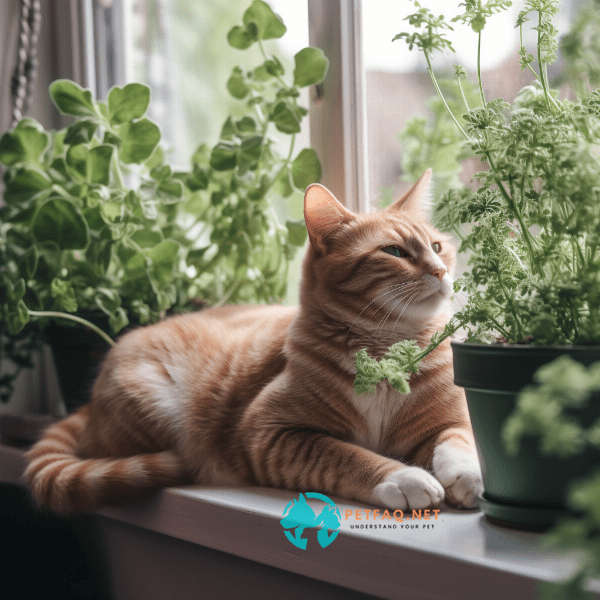
How to Grow Catnip Plant in Your Home Garden
Growing catnip plant in your home garden can be a great way to provide your cat with a natural source of entertainment and stimulation. Here are some tips on how to successfully grow catnip plant in your own garden.
Choosing the Right Location
Catnip plant thrives in full sunlight and well-drained soil. Choose a location in your garden that receives at least six hours of direct sunlight per day and has well-drained soil. Catnip can also be grown in pots indoors, as long as they receive sufficient light.
Planting Catnip Seeds
Catnip plant can be grown from seeds or cuttings. If you choose to grow from seeds, plant them in early spring, after the last frost. Sow the seeds about 1/4 inch deep and keep the soil moist until the seedlings emerge.
Caring for Catnip Plant
Catnip plant is relatively low maintenance and requires minimal care. Water the plant regularly, especially during dry spells, and fertilize with a balanced fertilizer every two to three weeks during the growing season. Catnip can grow up to 3 feet tall, so it’s important to provide support to prevent the plant from falling over.
Harvesting Catnip
Harvest catnip plant in the early morning when the plant’s oils are the strongest. Cut the stems of the plant and hang them upside down in a dry, well-ventilated area to dry. Once the leaves are dry, you can crumble them up and store them in an airtight container.
In summary, growing catnip plant in your home garden is a simple and rewarding process. By choosing the right location, planting the seeds or cuttings, and providing proper care, you can grow a healthy and robust catnip plant that your cat will love.
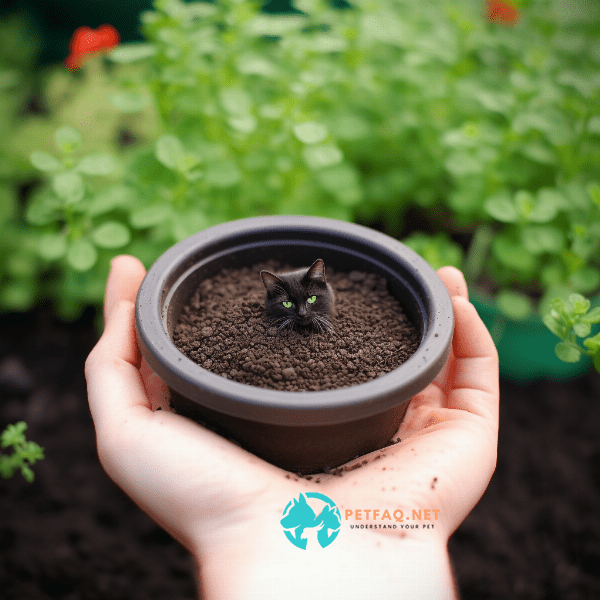
Different Ways to Use Catnip Plant to Entertain Your Cat
Catnip plant can provide hours of entertainment for your cat, and there are several ways to use it to keep your feline friend happy and stimulated.
Catnip Toys
One of the easiest ways to use catnip plant to entertain your cat is through catnip toys. You can find a wide variety of catnip toys available at pet stores or online. These toys are filled with dried catnip and can be great for encouraging playtime and exercise.
DIY Catnip Treats
Another way to use catnip plant to entertain your cat is by making your own catnip treats. You can add dried catnip to your cat’s favorite treat recipe or create a simple catnip-infused snack by sprinkling catnip onto some of their favorite food.
Catnip Spray
Catnip spray is a great way to provide your cat with the effects of catnip plant without the mess. You can purchase catnip spray at pet stores or make your own by steeping catnip in water and then straining it into a spray bottle. Simply spray the catnip spray onto your cat’s toys, scratching post, or bedding for a fun and stimulating experience.
Fresh Catnip
Lastly, providing your cat with fresh catnip can be a great way to keep them entertained. You can grow catnip plant in your home garden and then offer the fresh leaves to your cat to sniff, roll in, or play with. Fresh catnip can provide a stronger and longer-lasting effect than dried catnip.
In conclusion, there are several ways to use catnip plant to entertain your cat, from catnip toys to DIY treats and catnip spray. Fresh catnip can also be a great option for providing a more potent and natural source of stimulation for your cat. Incorporating catnip into your cat’s playtime routine can provide hours of entertainment and stimulation.
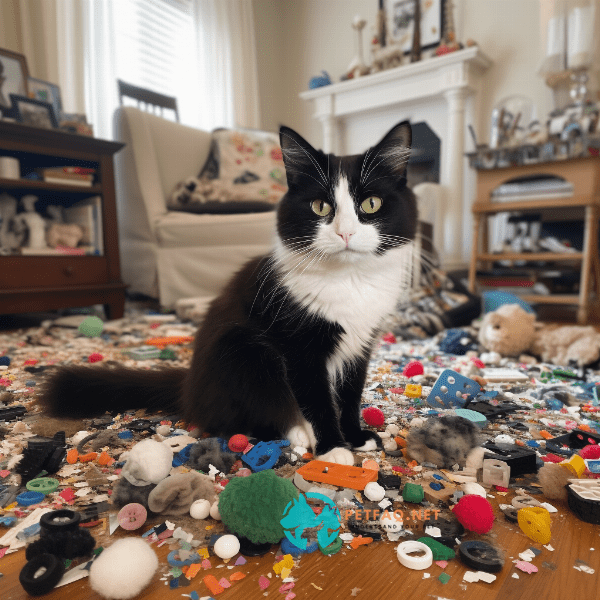
Catnip Plant as a Natural Stress Reliever for Your Cat
Cats can experience stress and anxiety, just like humans. Fortunately, catnip plant can provide a natural and safe way to alleviate stress and promote relaxation for your feline friend.
How Catnip Helps with Stress
The active ingredient in catnip plant, nepetalactone, has a calming effect on cats. When a cat is exposed to catnip, it triggers the release of feel-good hormones in their brain, which can help reduce stress and anxiety. Additionally, the playful behavior that cats exhibit when exposed to catnip can help distract them from any stressors in their environment.
How to Use Catnip for Stress Relief
Catnip can be used in a variety of ways to help alleviate stress and anxiety in cats. You can offer your Cat catnip toys or provide them with fresh or dried catnip leaves. You can also use catnip spray to provide a calming effect on your cat’s environment, such as on their bedding or in their carrier when traveling.
When to Use Catnip for Stress Relief
Catnip can be used in a variety of situations to help alleviate stress in cats. It can be especially helpful during events that can cause stress or anxiety, such as vet visits or travel. Catnip can also be used to help cats adjust to changes in their environment, such as moving to a new home or introducing a new pet.
In summary, catnip plant can be a natural and effective way to alleviate stress and promote relaxation in cats. By offering catnip toys or providing fresh or dried catnip leaves, you can help your feline friend feel more calm and comfortable in their environment.
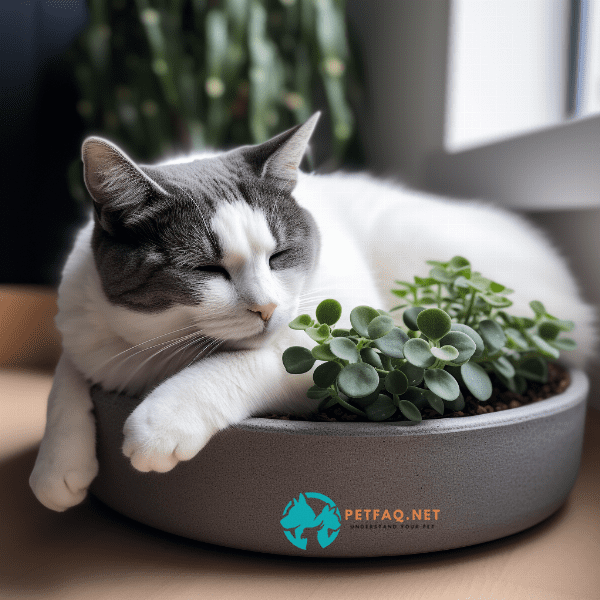
Catnip Plant and its Effect on Your Cat’s Mood
Playfulness and Excitement
One of the most well-known effects of catnip plant is its ability to make cats playful and excited. When exposed to catnip, cats may exhibit behaviors such as rolling, flipping, and jumping. This is because the nepetalactone in catnip plant triggers the release of endorphins in your cat’s brain, causing them to feel happy and playful.
Temporal Changes in Mood
It’s important to note that the effects of catnip plant on your cat’s mood are temporary and will eventually wear off. Additionally, not all cats will react to catnip in the same way. Some may become more playful and others more relaxed, while some may not react to it at all.
In conclusion, catnip plant can have a significant effect on your cat’s mood, causing playfulness and excitement or relaxation and calmness. Understanding how catnip plant affects your cat’s mood can help you better incorporate it into their daily routine and provide them with hours of enjoyment and stimulation.
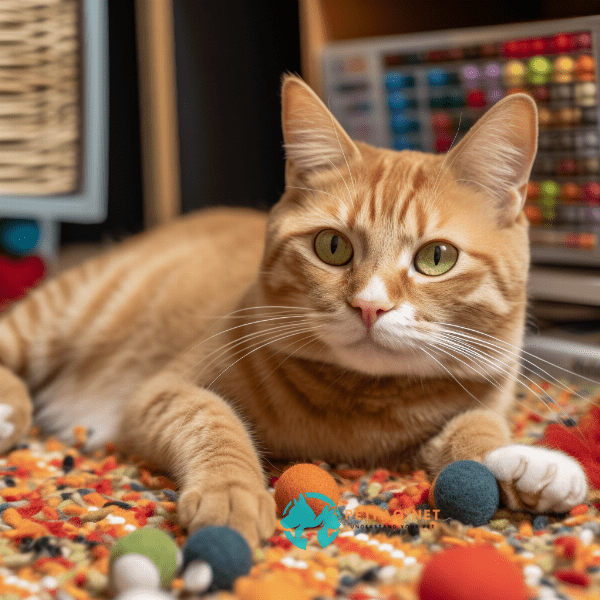
Catnip Plant and Its Role in Training Your Cat
Catnip plant can be a useful tool in training your cat, as it can encourage certain behaviors and make the training process more enjoyable for your feline friend.
Positive Reinforcement
One way to use catnip plant in training your cat is through positive reinforcement. When your cat exhibits a desired behavior, such as using their scratching post instead of your furniture, you can reward them with a catnip treat or toy. This positive reinforcement can help reinforce the desired behavior and make it more likely that your cat will continue to exhibit it.
Encouraging Playtime
Catnip plant can also be used to encourage playtime with your cat. Playing with your cat can provide important exercise and mental stimulation, as well as help strengthen the bond between you and your feline friend. Incorporating catnip toys into your playtime routine can make it more enjoyable and engaging for your cat.
Training for Travel or Vet Visits
Catnip can also be used to train your cat for travel or vet visits. By using catnip as a reward during training, you can help your cat associate positive feelings with these often stressful experiences. Additionally, providing your cat with a catnip toy or spray during travel or vet visits can help them feel more calm and comfortable.
In conclusion, catnip plant can play a useful role in training your cat, whether through positive reinforcement, encouraging playtime, or preparing for travel or vet visits. By incorporating catnip into your training routine, you can make the process more enjoyable for your cat and help strengthen the bond between you and your feline friend.

Catnip Plant and Its Relationship with Other Feline Behaviors
Catnip plant can have an impact on various feline behaviors, from playfulness to aggression. Understanding the relationship between catnip and other feline behaviors can help you better understand and care for your cat.
Playfulness
As previously mentioned, catnip plant is well-known for its ability to make cats playful and excited. When exposed to catnip, cats may exhibit behaviors such as rolling, flipping, and jumping. This playfulness can be beneficial for your cat’s physical and mental health, providing important exercise and stimulation.
Aggression
While catnip can have a positive effect on many cats, it can also trigger aggression in some cats. This is more common in male cats and can lead to fighting and other aggressive behaviors. If your cat exhibits aggression after being exposed to catnip, it may be best to limit their exposure or avoid it altogether.
Relaxation
Catnip can also have a relaxing effect on some cats, causing them to become more calm and at ease. This can be especially beneficial for cats who are nervous or anxious in certain situations, such as during travel or vet visits.
Sensitivity to Catnip
It’s important to note that not all cats will react to catnip in the same way. Some may become more playful, while others may become more relaxed or show no reaction at all. Additionally, some cats may be more sensitive to catnip than others, and it’s important to monitor your cat’s behavior and reactions when exposed to catnip.
In conclusion, catnip plant can have an impact on various feline behaviors, from playfulness to aggression and relaxation. Understanding how your cat reacts to catnip can help you provide them with appropriate levels of exposure and care. Additionally, it’s important to monitor your cat’s behavior and reactions when exposed to catnip to ensure their safety and well-being.
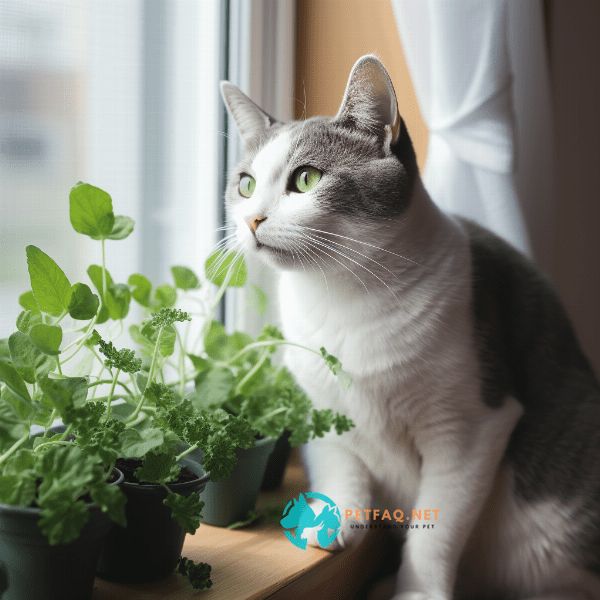
Precautions and Safety Measures when Using Catnip Plant for Your Cat
While catnip plant can be a fun and enjoyable addition to your cat’s routine, it’s important to take precautions and safety measures to ensure your cat’s well-being.
Monitoring your Cat’s Behavior
It’s important to monitor your cat’s behavior and reactions when exposed to catnip. Not all cats will react to catnip in the same way, and some may have adverse reactions, such as vomiting or diarrhea. Additionally, if your cat exhibits aggression after being exposed to catnip, it may be best to limit their exposure or avoid it altogether.
Dosage and Frequency
Like any substance, it’s important to use catnip plant in moderation. Overexposure to catnip can lead to overstimulation, which can be harmful to your cat’s health. Additionally, while catnip is generally safe for cats, it’s important to avoid giving them large amounts or using it too frequently.
Safety of the Plant Itself
While catnip plant is safe for cats, it’s important to ensure the safety of the plant itself. If you choose to grow catnip in your home garden, make sure to keep it away from any toxic plants or substances that may harm your cat. Additionally, keep the plant out of reach of any curious cats who may try to eat or ingest it.
In conclusion, taking precautions and safety measures when using catnip plant for your cat can help ensure their well-being and enjoyment. By monitoring their behavior, using catnip in moderation, and ensuring the safety of the plant itself, you can provide your feline friend with hours of stimulation and entertainment.

Conclusion: Incorporating Catnip Plant into Your Cat’s Life
Catnip plant can provide numerous benefits for your cat’s health, well-being, and entertainment. By understanding its effects on your cat’s behavior and taking precautions for their safety, you can incorporate catnip into their daily routine in a fun and enjoyable way.
Providing Stimulation and Exercise
Incorporating catnip toys, treats, or fresh leaves into your cat’s playtime routine can provide important exercise and mental stimulation. This can help keep your cat healthy, happy, and engaged.
Alleviating Stress and Anxiety
Catnip can also provide a natural and safe way to alleviate stress and anxiety in cats. Using catnip spray or providing fresh or dried leaves during stressful events can help calm your cat and provide them with a sense of comfort.
Training and Positive Reinforcement
Catnip can also be a useful tool in training your cat, through positive reinforcement and encouraging playtime. This can strengthen the bond between you and your feline friend and help them develop positive behaviors.
In conclusion, incorporating catnip plant into your cat’s life can provide numerous benefits for their health, well-being, and entertainment. By understanding its effects and taking precautions for their safety, you can provide your cat with hours of enjoyment and stimulation.
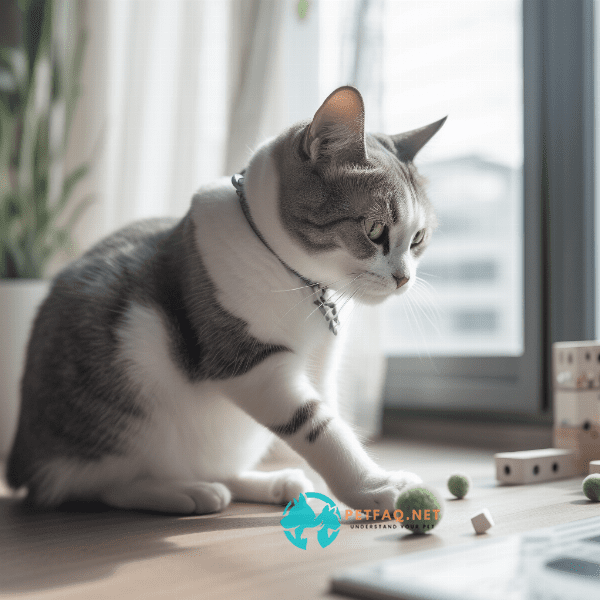
Frequently Asked Questions (FAQs) about catnip plant:
1. How does catnip plant affect cats and what causes this reaction?2. Can humans consume catnip plant and are there any benefits to doing so?
3. Where is catnip plant native to?
4. How is catnip harvested and prepared for use?
5. Are there any side effects of using catnip for cats or humans?

